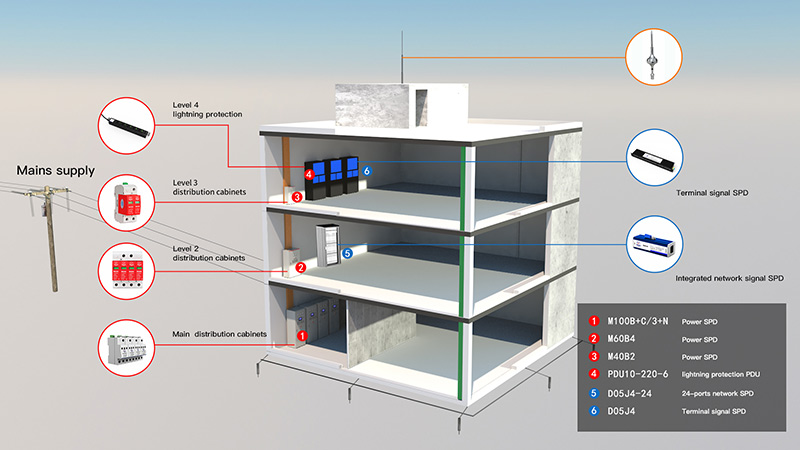Agricultural facilities, including barns, silos, and greenhouses, are particularly vulnerable to lightning strikes due to their open and elevated structures. Lightning can trigger fires, damage expensive equipment, and pose a risk to livestock. These events can result in substantial financial losses and disrupt farm operations. Installing a lightning protection system helps prevent such incidents and provides a reliable safeguard for property, machinery, and animals. By understanding how these systems work and the benefits they offer, farmers can make informed decisions to protect their agricultural investments and maintain smooth operations during severe storms.
Understanding Lightning Protection Systems
A Lightning Protection Systems is designed to intercept lightning strikes and safely channel the electrical energy into the ground. This prevents fires, equipment damage, and potential harm to livestock. Key components include:
- Air Terminals (Lightning Rods): Located at high points, these rods attract lightning and divert it away from vulnerable parts of the building.
- Conductors: Copper or aluminium wires guide the energy safely from the air terminals to the grounding system.
- Grounding Systems: Electrodes or rods buried in the soil disperse the electrical energy and reduce the risk of structural damage.
- Surge Protection Devices: These devices protect electrical systems, irrigation equipment, and automated machinery from sudden voltage spikes caused by lightning.
By combining these elements, the system provides a comprehensive safety mechanism tailored to the specific layout of the facility.
Risks Faced by Agricultural Facilities
Without proper protection, agricultural operations face several hazards:
- Fire Hazards: Lightning can ignite combustible materials in barns, storage sheds, or silos, potentially destroying crops or buildings.
- Equipment Damage: Power surges caused by nearby strikes can harm irrigation systems, feed dispensers, sensors, and other automated machinery.
- Livestock Safety: Animals in barns, pens, or open fields are vulnerable to injury or death if lightning strikes directly or causes secondary fires.
Even a single lightning strike can lead to costly repairs, operational downtime, and threats to livestock welfare. Farms located in storm-prone areas are particularly at risk, making preventive measures essential.
Benefits of Lightning Protection Systems
Installing a lightning protection system offers several clear advantages:
- Fire Prevention: Minimises the risk of fires caused by direct or side-flash lightning strikes.
- Equipment Protection: Shields valuable machinery and electrical systems from surges and potential malfunction.
- Livestock Safety: Reduces the chance of injury or fatalities among animals, particularly during thunderstorms.
- Operational Continuity: Ensures farm activities continue smoothly during storms, preventing disruption in feeding, irrigation, and storage.
- Insurance Advantages: Many insurance providers offer lower premiums for facilities equipped with proper lightning protection.
The system provides peace of mind, knowing that critical farm infrastructure and living assets are safeguarded.
Considerations for Implementation
When installing a lightning protection system, it is important to:
- Conduct a Site Assessment: Evaluate the facility’s structure, surrounding landscape, and specific lightning risks.
- Hire Professionals: Engage certified experts to design and install the system correctly.
- Perform Regular Maintenance: Schedule inspections to ensure the system remains functional, particularly after severe weather events.
Customising the system according to the facility’s needs maximises protection and ensures long-term effectiveness.
Conclusion
Investing in a lightning protection system is a practical measure to protect agricultural facilities from lightning-related damages. Beyond preventing fires and safeguarding equipment, these systems protect livestock and maintain operational continuity. By assessing risks, installing professional-grade systems, and conducting regular maintenance, farmers can significantly reduce potential losses and improve the safety and resilience of their operations. Implementing lightning protection is not just a precaution. It is a proactive step toward long-term sustainability, asset security, and peace of mind during unpredictable weather conditions.
